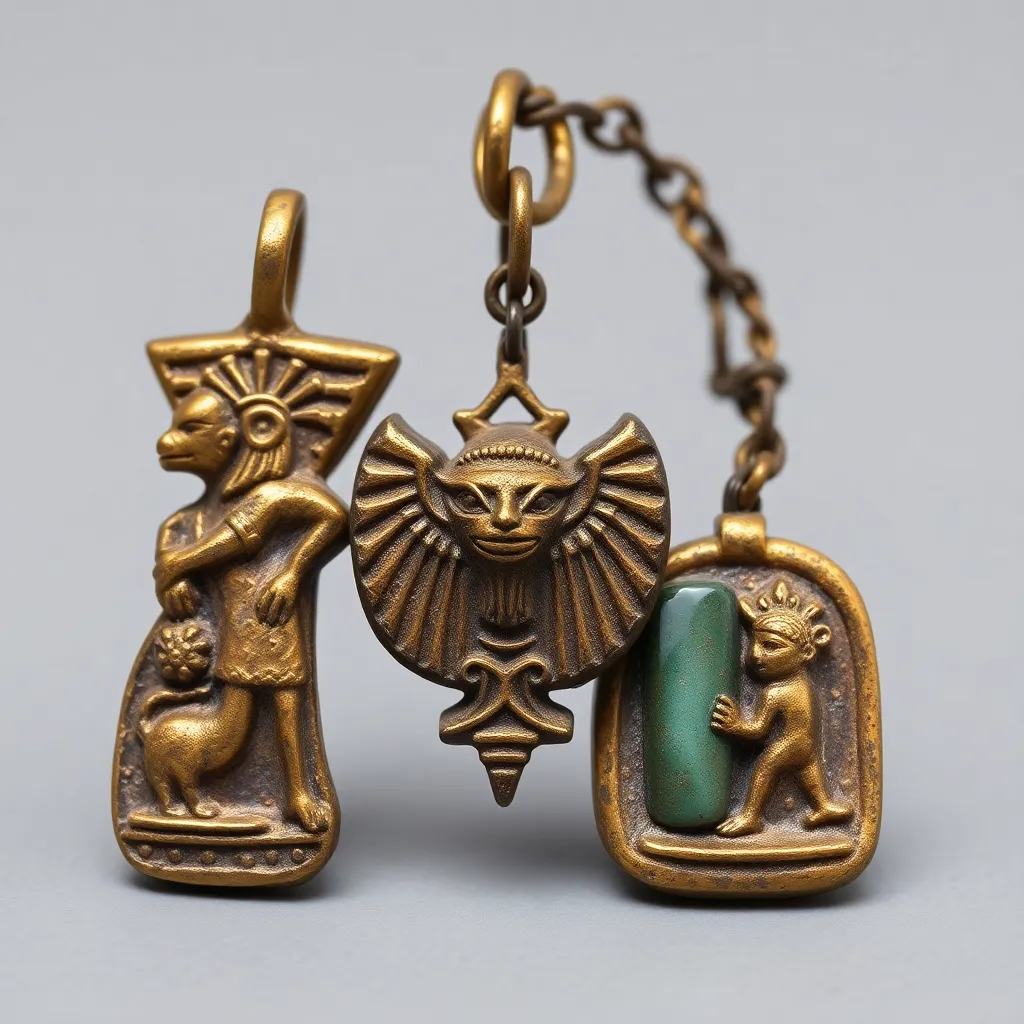Amulets for Protection Against Natural Disasters in Ancient Egypt
I. Introduction
The ancient Egyptians possessed a complex belief system that intertwined spirituality with daily life, emphasizing the importance of amulets. These small objects were not only decorative but also held significant power, believed to offer protection, health, and prosperity. Among their many uses, amulets played a crucial role in safeguarding individuals and communities against the unpredictability of natural disasters.
This article explores the role of amulets in ancient Egyptian culture, particularly their function as protective talismans against natural disasters such as floods, droughts, and earthquakes.
II. Understanding Natural Disasters in Ancient Egypt
Natural disasters posed a significant threat to the stability and survival of ancient Egyptian society. The most common disasters included:
- Floods: The annual inundation of the Nile was essential for agriculture but could also lead to destructive floods.
- Droughts: Periods of low rainfall could result in crop failures and famine.
- Earthquakes: Though less frequent, earthquakes could devastate structures and communities.
The cultural impacts of these disasters were profound, shaping the Egyptians’ worldview and belief systems. Disasters were often interpreted as manifestations of divine displeasure or warnings from the gods, leading to increased reliance on spiritual protection.
III. The Concept of Protection in Ancient Egyptian Beliefs
Protection was a central theme in ancient Egyptian religion and spirituality. The Egyptians believed in a multitude of gods and goddesses, each associated with different aspects of life and nature. Key beliefs included:
- Spiritual significance: Protection from disasters was seen as a divine favor, and rituals were performed to seek this favor.
- Role of deities: Gods such as Osiris, Isis, and Horus were invoked for safeguarding against calamities, with each deity embodying specific protective attributes.
IV. Types of Amulets Used for Protection
Various amulets were created and used for protection against natural disasters. Some of the most notable include:
- Scarab: Symbolizing rebirth and transformation, the scarab beetle was believed to protect against misfortune and promote renewal.
- Ankh: Representing life and immortality, the ankh was a powerful symbol for protection and was often used in burial practices.
- Eye of Horus: This symbol represented protection, royal power, and good health, believed to ward off evil and disaster.
Amulets were crafted from various materials, including precious metals, stones, and clay. The craftsmanship involved was meticulous, often featuring intricate designs and inscriptions that enhanced their protective qualities.
V. Rituals and Practices Associated with Amulets
To maximize the protective power of amulets, ancient Egyptians engaged in specific rituals and practices:
- Consecration: Amulets were often consecrated through rituals that involved prayers and offerings to the gods, imbuing them with sacred energy.
- Personalization: Many amulets were personalized with the names of individuals or deities, tailoring their protective qualities to the wearer’s needs.
- Daily rituals: Egyptians would perform daily prayers and rituals to invoke protection, often incorporating their amulets into these practices.
VI. Archaeological Findings and Evidence
Archaeological discoveries have provided valuable insights into the use of amulets in ancient Egypt:
- Amulets found in tombs: Numerous amulets have been unearthed in burial sites, indicating their importance in the afterlife and as protective charms against disasters.
- Inscriptions and symbols: Analysis of inscriptions on amulets reveals the specific protective qualities sought by the ancient Egyptians, often referencing deities associated with safety and security.
VII. Cultural Legacy and Modern Interpretations
The influence of ancient Egyptian amulets extends into contemporary society, where many of their symbols have been adopted in various forms:
- Contemporary beliefs: Modern spiritual practices often incorporate ancient symbols, reflecting a continued reverence for the protective qualities attributed to these amulets.
- Jewelry and fashion: Amulets like the ankh and Eye of Horus have become popular motifs in jewelry, symbolizing protection and strength.
VIII. Conclusion
Amulets in ancient Egypt served as powerful symbols of protection against the uncertainties of life, particularly in the face of natural disasters. Their significance transcended mere ornamentation, embodying deep spiritual beliefs and practices that connected the living with the divine.
Today, the legacy of these symbols endures, reminding us of the ancient Egyptians’ resilience and their quest for safety in a world fraught with challenges. The enduring power of symbols and beliefs continues to inspire modern interpretations, demonstrating that the quest for protection and understanding of nature’s forces is a timeless pursuit.




